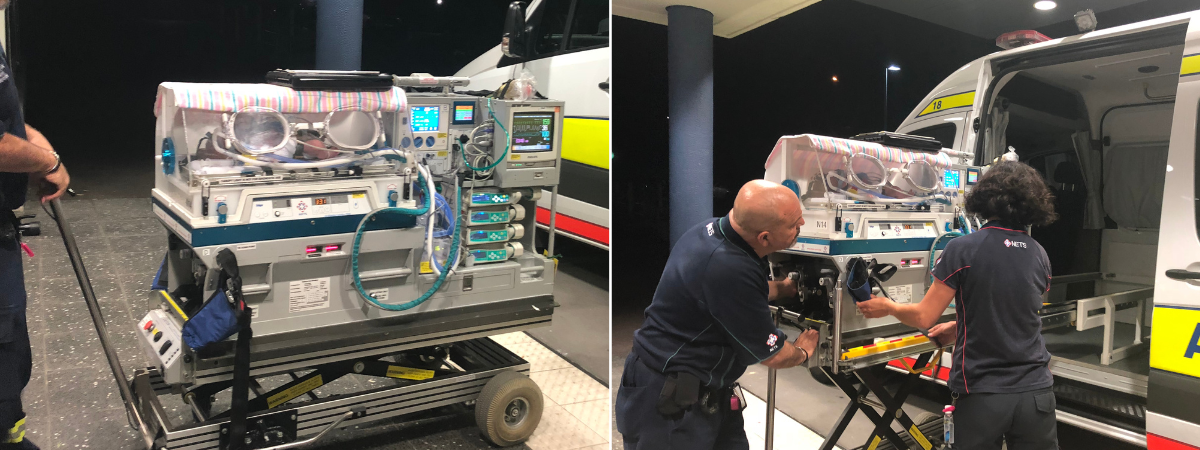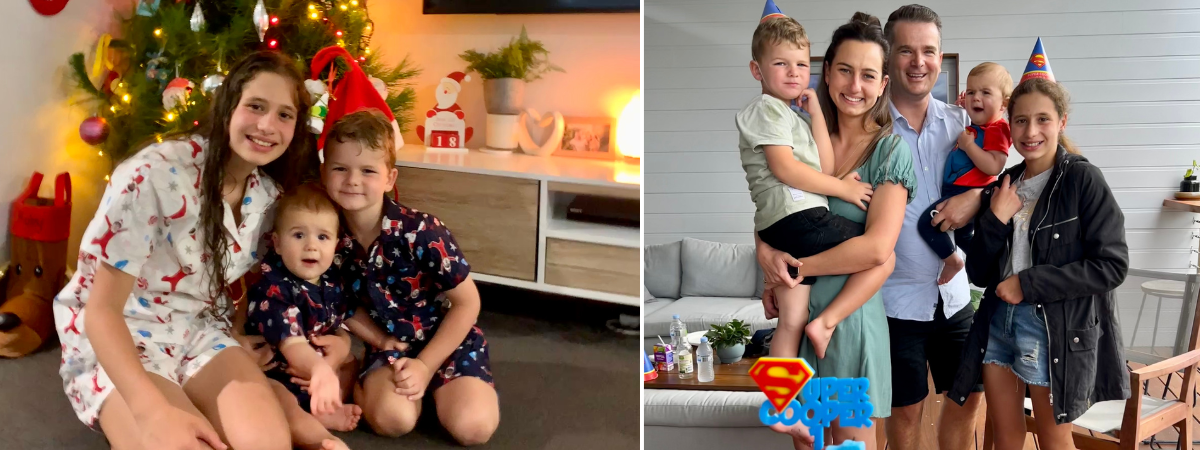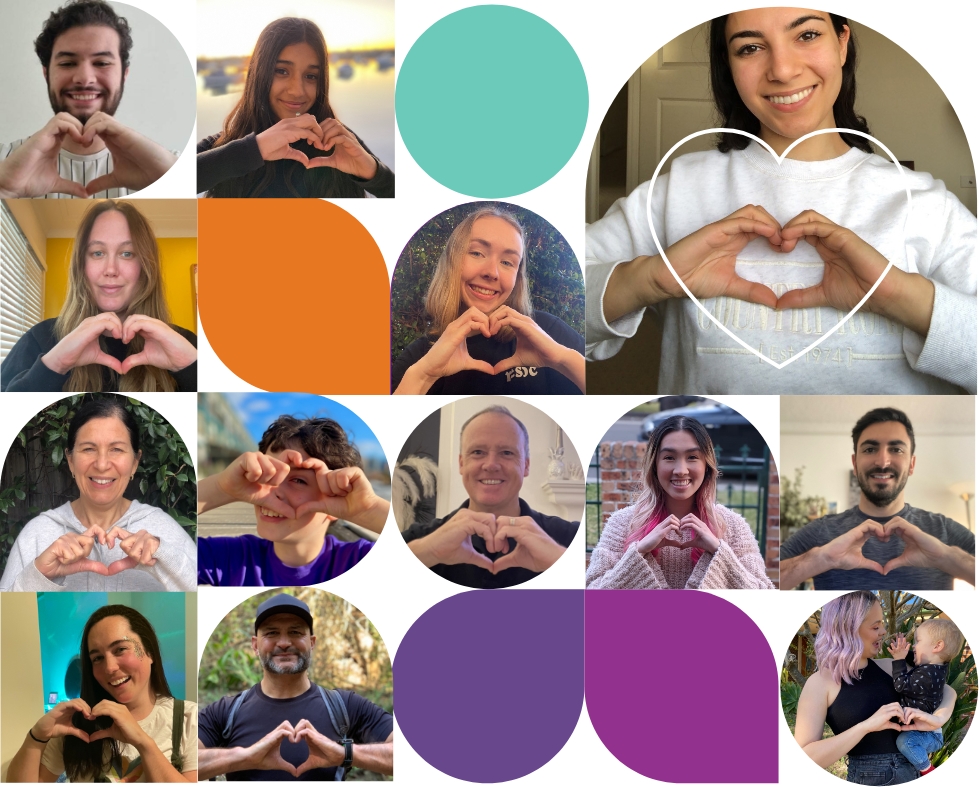An expert response from the Newborn and paediatric Emergency Transport Service (NETS), equipped with highly specialised neonatal equipment gave brothers, Koby and Cooper, a second chance at life.
“Immediately after birth he [Koby] started making this grunting noise,” Amanda remembers. “He wasn’t feeding, and he couldn’t breathe properly.”
With Koby’s condition deteriorating quickly, doctors put in an urgent call to NETS. Within a few hours, they arrived.
Operated by NSW Health and supported by Sydney Children’s Hospitals Foundation (SCHF), NETS, along with referring hospitals, provide critical care to children like Koby within in the first six hours of their illness.
NETS is considered the biggest admitting Paediatric Intensive Care Unit in the state with their ambulances doubling as a mobile ICUs and their role is vital in ensuring critical care can be delivered anywhere across the state, and patients can be safely transported to the right place for their ongoing care.
Working with a highly specialised Continuous Positive Airway Pressure (CPAP) machine, the NETS team were able to stabilise Koby’s condition and transfer him to John Hunter Hospital.

Michael says it was comforting to know his son’s care was in the hands of an experienced team of experts. “The NETS team were very well-prepared and reassuring. They were a breath of fresh air, literally.”
When Koby arrived at John Hunter Hospital, his condition was critical. He had pneumonia, and an MRI revealed he had experienced three minor strokes. Doctors feared he may not make it. But with specialised care in the Neonatal Intensive Care Unit and a targeted course of antibiotics, little Koby survived and grew stronger with each day.
Koby is now a happy, healthy five-year-old who loves taking care of his little brother and making new friends.

When Amanda fell pregnant with Cooper, every possible precaution was taken to prevent a repeat of what happened to Koby.
“At first everything was fine,” Amanda remembers. “It was a good delivery. But then we started to see a few of the signs we remembered from when Koby was born. Cooper wasn’t latching onto my breast, and I just thought, oh no. Here we go again.”
Just like Koby, little Cooper was struggling to breathe. In the space of just a few hours, his condition deteriorated badly.
“They put him on a CPAP machine on the highest possible level, but he was still struggling to breathe,” Amanda says.
Cooper’s doctors consulted NETS and decided to proceed with giving him medication to help strengthen his little lungs. It worked for a short time, before Amanda noticed something terrifying.
“I saw his chest stop moving,” she says. “The machine registered he had stopped breathing. He went into respiratory arrest and all these doctors came racing into the room to give him CPR.
“I just broke down in the corner thinking, we’ve lost him. He’s not going to make it. Then I heard one of the doctors say, ‘I can feel a pulse.’”
Cooper was still alive, but his condition was critical and so the NETS team were called for an urgent helicopter retrieval. While waiting for the NETs teams to arrive, doctors intubated him to take over his breathing.
The NETS team spent five hours working carefully on their tiny and fragile patient, before Cooper’s condition was stable enough to be transferred to John Hunter Children’s Hospital.
When this time came, the NETS team had to move quickly. A thick fog was setting in, and the helicopter pilot said they only had a 20-minute window to get in the air.
Thankfully, they made it into the air at 4am on Christmas morning. Cooper’s mum recalls his NETS retrieval nurse saying it was Cooper’s very first sleigh ride – a memory she still cherishes to this day.

Generous donations from Sydney Children's Hospitals Foundation supporters help provide the NETS team with state-of-the-art equipment like the Paediatric Life Support System (PLSS), which is vital to providing life-saving care to children like Cooper.
The PLSS is a ventilator designed to deliver gentler and better infusions to little patients. Funded by a generous gift from Sargent Pies Charitable Foundation, this cutting-edge piece of equipment was used for 280 missions for children up to the age of 15 years old, in the last year. Almost half of the patients transferred were treated for respiratory conditions like little Cooper.

Thanks to the extraordinary care Cooper received in those crucial hours, he was stable and healthy enough to be transferred back to his local hospital within a few days. Michael says he couldn’t be more grateful to the NETS team who gave both their sons a second chance at life. “They’re lifesavers. Miracle workers. We are forever in their debt.”
Amanda agrees things may have ended very differently without the NETS team. “I can’t thank them enough. Without them, we wouldn’t have either of our boys.”

To help sick kids like Koby and Cooper continue to receive the very best care, no matter where and when they need it, donate to Sydney Children’s Hospitals Foundation today. Your support will help make a difference to lives of sick and injured kids across NSW - from inner cities to outer suburbs, regional, rural and beyond.







